Slovenia, a majestic and mountainous southern European country, is home to the Julian Alps, a large part of which lies in Triglav National Park. Furthermore, Mount Triglav is the highest peak in Slovenia, as well as the symbol of the nation, one you can hike around. In addition to awe-inspiring Alpine mountains, Triglav National Park is overflowing with lakes, rivers, rolling hills and peaceful plains and valleys, making it a Mecca for hiking in Slovenia. Slovenia also houses the Kamnik-Savinja Alps and the Karavanke Alps, the longest mountain range in the country, all of which make for a great Slovenian hike.
Hiking in Slovenia enables you to enter enchanted forests, scale rocky-mountain ridges and lose yourself in pristine nature. If trekking at high Alpine altitudes isn’t for you, explore Slovenia’s hill country, which consists of lush green forests and expansive meadows. Because 90 per cent of Slovenia is 1,000 feet or more above sea level, it is a hill-hiking paradise. And because Slovenia has an Adriatic coastline, albeit a small one, your Slovenian hike can also include a seaside stroll along the Slovene Riviera. And our Slovenia hiking guide would not be complete without mentioning you can circumambulate the Julian Alps’ Lake Bled, one of the most grandiose and photographed lakes in all of Europe.
Wherever you decide to go hiking in Slovenia, you’ll have seemingly endless miles of trails to explore. In fact, according to I Feel Slovenia, there are more than 10,000 kilometres (over 6,200 miles) of marked hiking trails in Slovenia, and hikers can choose from approximately 175 mountain huts for overnight treks. And if you’re worried about where to go, experienced guides can show you the way, or you can go it alone and see where your feet take you. There are even themed trails for hiking in Slovenia, such as tracking bears, hiking in ancient forests and hiking from green forests to the sea, to name but a few. During inclement weather, you can also stay warm and dry hiking through extensive cave systems.
Lake Bled
There are many hikes at breathtaking Lake Bled, the easiest being to simply walk around the lake.
The 6-kilometre trek will take about an hour unless you stop to gaze upon the fairy-tale looking, cliff-hanging Bled Castle, become hypnotized by mystical Bled Island in the middle of the lake and its sacred Church of Mary the Queen, aka Our Lady of the Lake, or pause to listen to the symphony of nature surrounding you, all of which is a feast for the senses.
For a more challenging hike, but no less rewarding, tackle Ojstrica Bled or Osojnica Bled. The trailheads for these hikes are located on the west side of the lake and lead to lookout points that offer commanding views of Lake Bled and the surrounding Julian Alps.
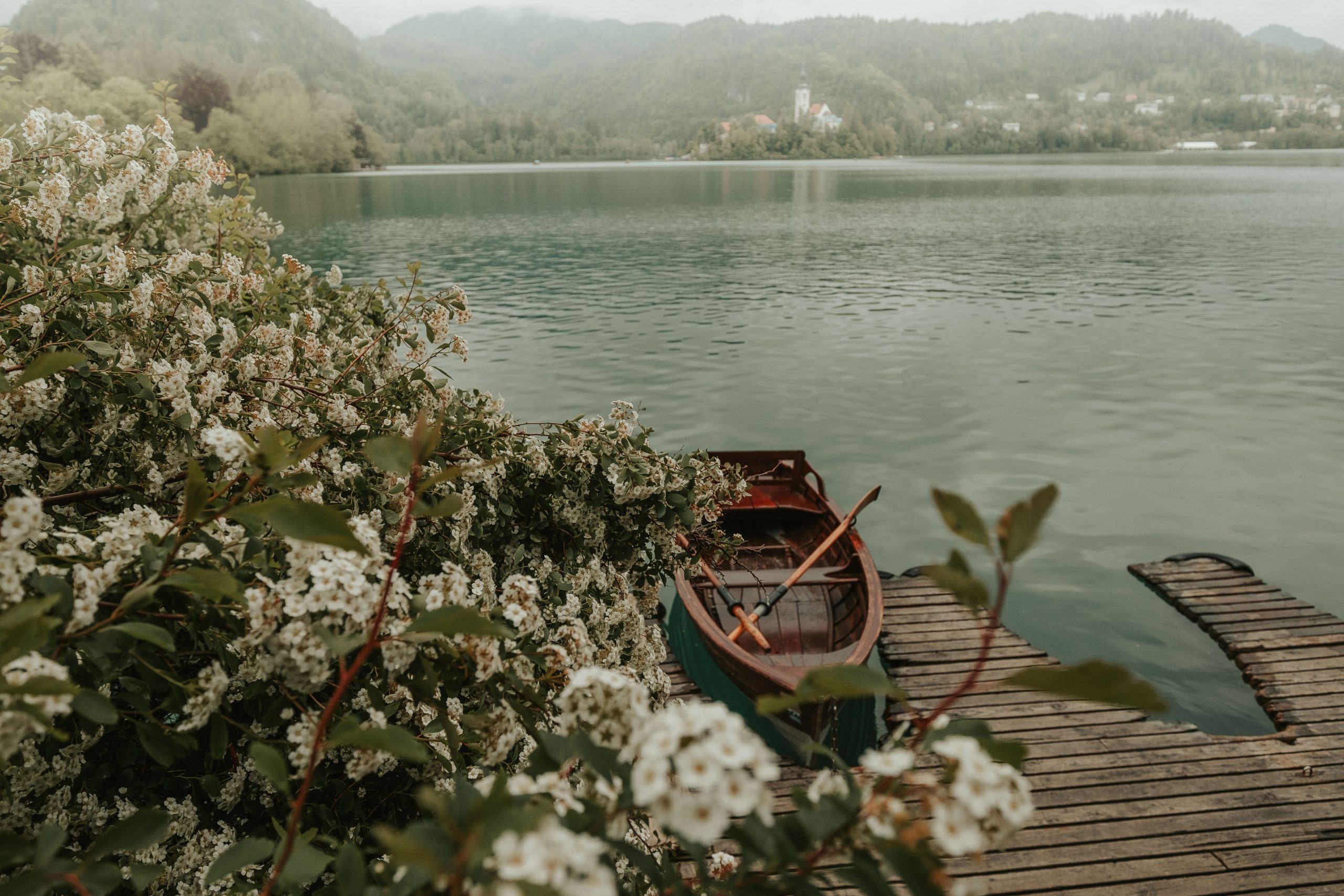
Julian Alps
If visiting Lake Bled, don’t miss out on hiking in the surrounding, the spectacular Julian Alps, which stretch from northeastern Italy to northwestern Slovenia, and Triglav National Park. July, August and September are considered the best months to hike in the Julian Alps, in order to avoid potential snowfall. Are you interested in long-distance hiking? You’re in luck, as the marked 300-kilometre (186-mile) Julian Alps Hiking Trail is open. This much-anticipated trail begins and ends in the town of Rateče, located near the border with Italy.
The trail winds through the Julian Alps and many villages that lie within, as well as along rivers, lakes, waterfalls, gorges and through Arden-like forests. In addition to the villages, there are many huts along the way where hikers can spend the night.
If a 300-kilometre hike is too time-consuming, you can opt for a plethora of other short-distance treks, such as the 5-kilometre (3-mile) Slemenova Špica trail, which starts at Slovenia’s highest mountain road at Vršič Pass; and the 2.5-kilometre (1.5-mile) Path of the Pagan Girl Hike, which is also located in the Vršič Pass area.
The Pagan Girl was cursed by her sisters and turned to stone, and hikers on her trail can see her stone face and witness her fate.
One of the most popular hikes in the Julian Alps is the Debela Peč trail, which leads to one of the most picturesque peaks in the range, Mount Debela Peč. And no hiker in Slovenia can miss the Valley of the Seven Lakes. This 25-kilometre (15.5-mile) hike, which begins at the car park for Savica Waterfalls, takes all day, but is well worth it, as you will be one with the crystal-clear lakes as well as Alpine valleys, craggy peaks and green forests.
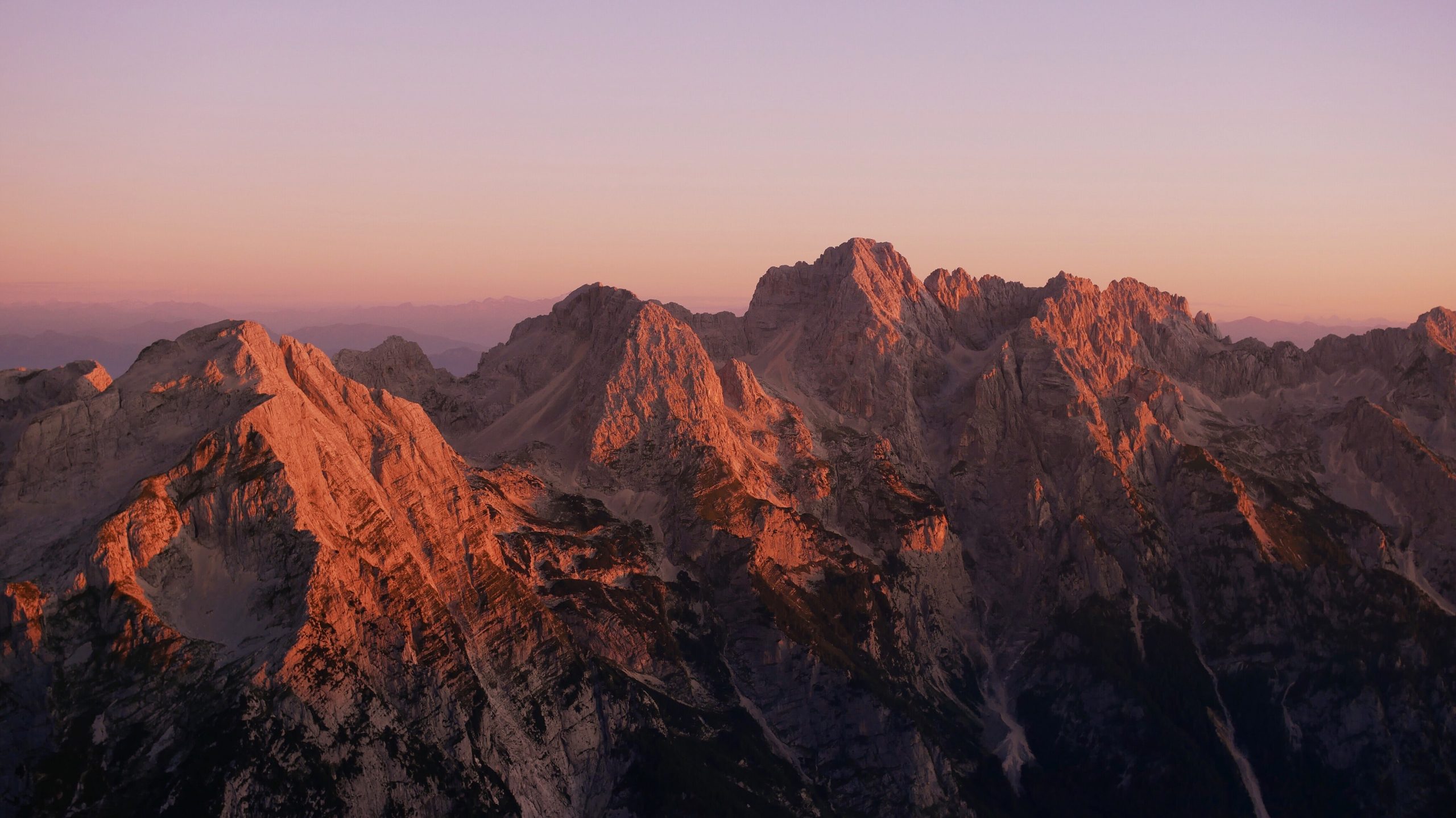
Karavanke Alps
When it comes to Alpine peaks, the Julian Alps aren’t the only game in town. The Karavanke Alps, one of the longest ranges in Europe and the longest in Slovenia, are just as scenic, and its hiking trails less taxing.
The highest peak in the Karavanke Alps is Mount Stol, at over 2,230 meters (7,300 feet), of which numerous trails lead to its peak. Fortunately for hikers who take on Mount Stol, the Valvasor mountain hut offers rest and warmth year-round. These picturesque mountains are ideal for brief escapes into the peaks as well as long-distance treks.
In addition to a plethora of trails leading to majestic mountaintops, you’ll also find magnificent mountain pastures, jaw-dropping valleys, gorgeous gorges and wonderful waterfalls in the Karavanke Alps. If your path leads to Mount Golica, you will also find yourself swimming in a sea of daffodils.
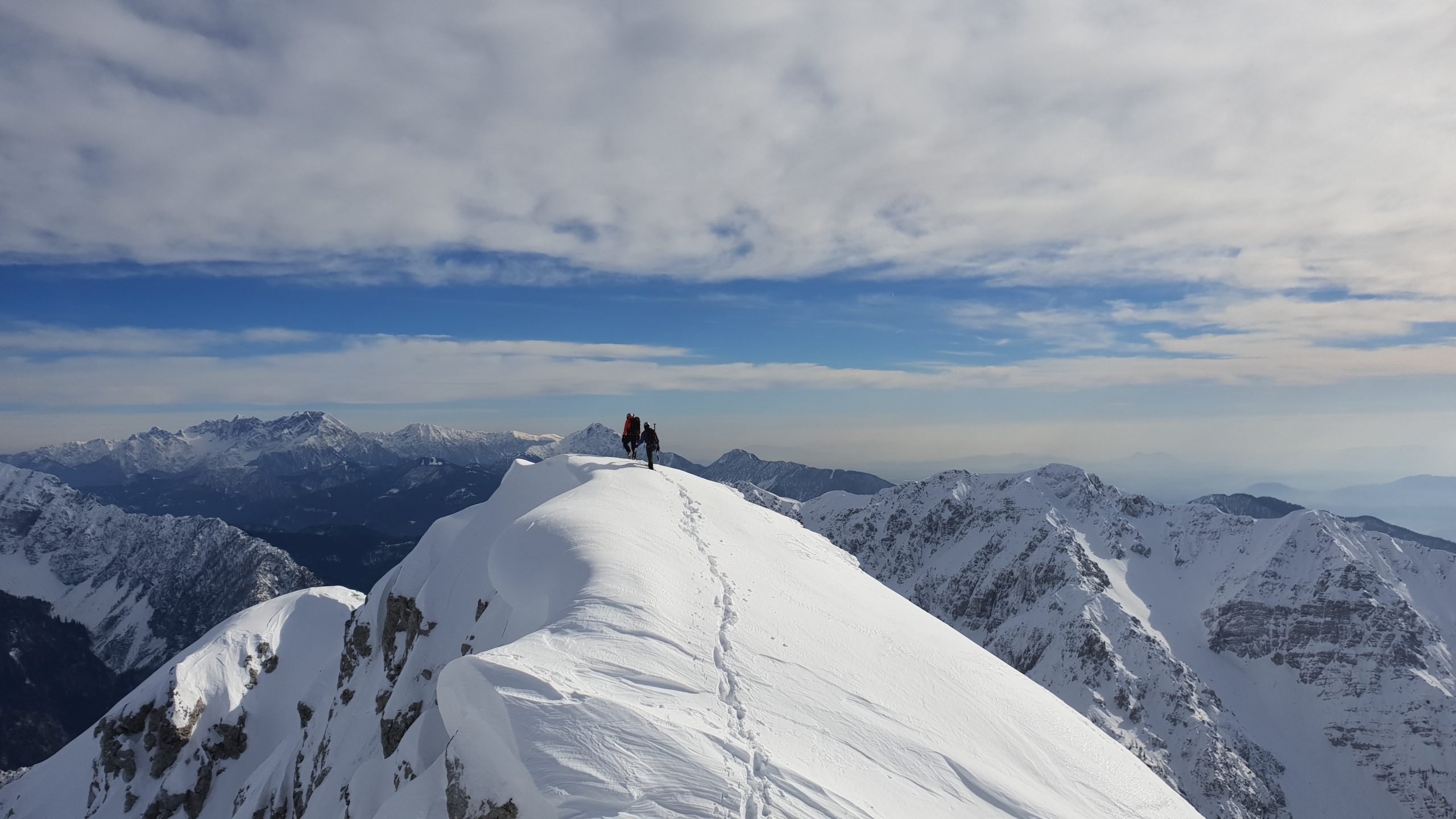
Kamnik-Savinja Alps
A third and great option for Alpine hiking in Slovenia is the Kamnik-Savinja Alps, another Slovenian mountain Mecca. Located south of the Karavanke range, the Kamnik-Savinja Alps also boast a glacier, the Skuta Glacier, which is the easternmost glacier in the Alps.
This range is well-known for its biodiversity, crystal-clear rivers and streams, peaceful mountain pastures, serene forests, glacier-carved valleys and an extensive network of marked hiking trails that are well-maintained.
There are also a number of Alpine huts in this range that cater to hikers. There is an abundance of popular hikes in the Kamnik-Savinja Alps, particularly the Fairytale Forest with Sensory Trail, which winds its way through the stunning Logar Valley; the Logar Valley Trail itself, which features many waterfalls, including Rinka Falls, one of the tallest free-falling waterfalls in Slovenia; caves and seven natural monuments; and the Solcava Panoramic Road, widely considered the trail with the most amazing views in this exalted range of mountains.

Slovene Riviera
If you prefer the sea over the mountains, Slovenia, located on the Istrian Peninsula, has an Adriatic coastline, frequently referred to as the Slovene Riviera and part of the Gulf of Trieste. Furthermore, because it’s only about 46 kilometres long, approximately 28.5 miles, you can hike the entire length of the country’s coastline, otherwise known as “Croatia without the crowds,” and cool off along the way the aquamarine waters of the Adriatic.
This stunning stretch of coast in Slovenia, although diminutive, rivals any found in neighbouring Croatia and Italy. In fact, some of the most striking trails in Slovenia skirt its coast, and if you bring your passport you can hike right into Croatia if going south, or Italy, if going north.
One of the most trekked trails on the Slovene Riviera is a 3.5-kilometre (2-mile) adventure from the seaside resort Portorož to Piran, which is renowned for its Venetian architecture.
Whether you take a short hike from resort town to resort town or hike the entire length of the Slovene Riviera, you are in for some of the most amazing scenery Slovenia has to offer. The Istrian Peninsula is also intersected with hiking trails, many of which pass through some of Slovenia’s most quaint and beautiful villages.

The Karst: From Sky to Cave to Sea
If you want to mix mountains with the sea, you can by hiking from the Karst to the Adriatic, which is mostly downhill. The Karst region is characterized by high, steep plateaus, cliffs, deep valleys, pine forests and caves.
In fact, the Karst is famous for caves, including world-renowned Vilenica Cave, the oldest show cave in Europe, and Škocjan Caves, which is a UNESCO World Heritage Site, some of which you can hike through. Hiking around the Karst is so traditional that a number of famous international hiking trails meet here, including the Way of St. James, Via Alpina and the Alpe Adria Trail, all of which lead to the sea.
Some of the Karst’s most revered hikes include the 3-kilometre (1.8-mile) Djestence Forest Educational Trail, which starts at the village of Senožeče and winds its way through the forest, where you can not only hike but learn about the forest’s flora and fauna; the Friendship Trail, which runs through the Glinščica Valley area along an ancient salt-trading route that was used for centuries; and the otherworldly Škocjan Caves, where you can combine spelunking with hiking and view mind-blowing cave formations, underground lakes and waterfalls.
The cave system is so wondrous that it has been recognized as one of the natural treasures of planet Earth.
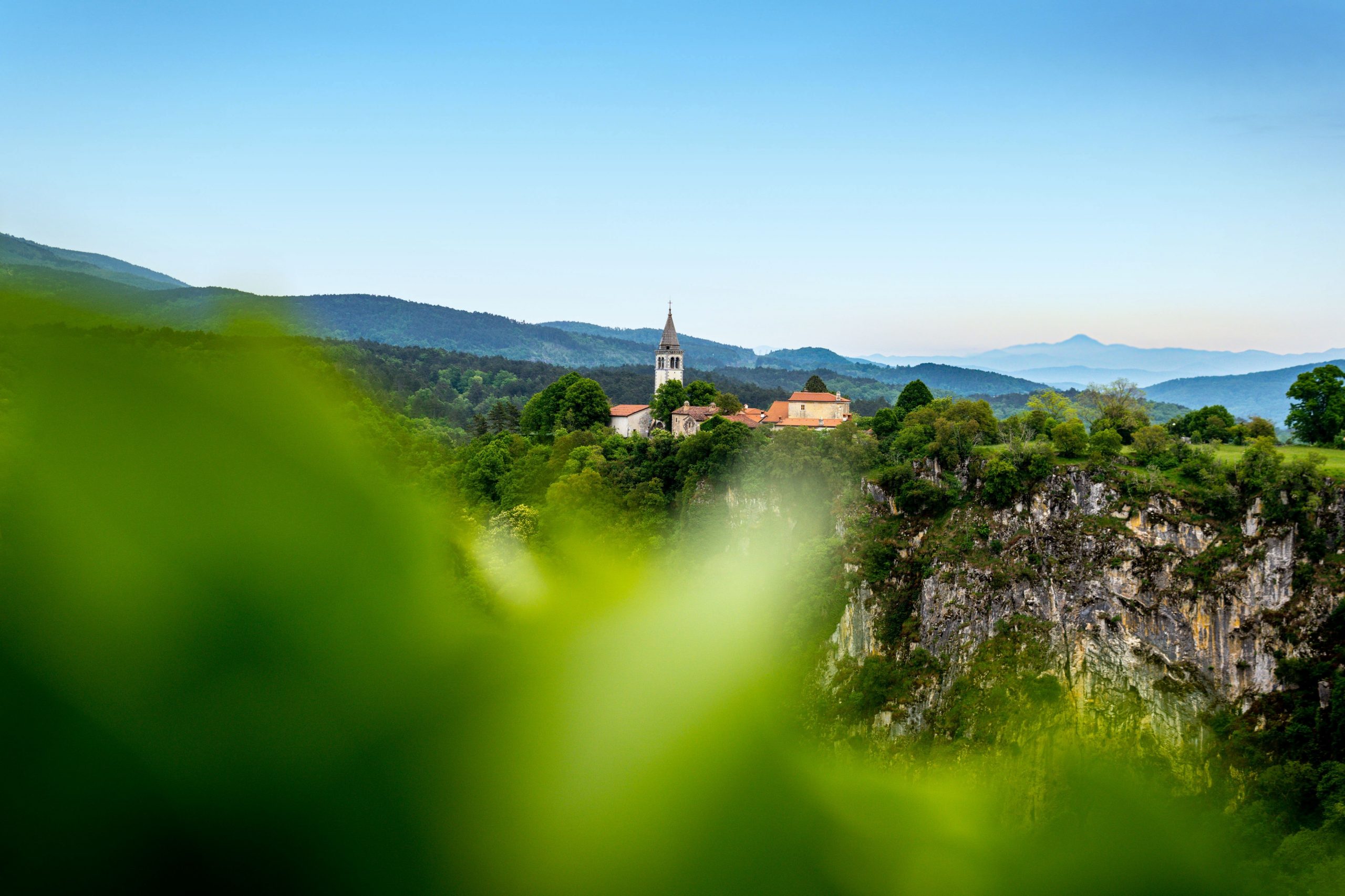
Hill Hiking
If you prefer to hike somewhere between the mountains and the sea, then head for the hills. Fortunately, Slovenia has a cornucopia of trails that traverse its many hills.
Do you love waterfalls, small lakes and lush forest? Then hiking at the Pohorje Hills, which has a vast network of trails, is for you. These hills house one of Slovenia’s most beautiful lakes, Črno Jezero.
Here you will also find the Ribnica peat bogs, forests full of fir trees, as well as beech and spruce, and the first international Vinotour Nordic walk trail, which leads through the vineyards of Slovene wine producers.
Another popular place for hill hiking in Slovenia is in the Idrija-Cerkno Hills, which is also the site of the Divje Babe Archaeological Park, one of the most important archaeological sites of the Early Stone Age on Earth. These hills are also home to valleys, narrow ravines, plateaus and marked hiking trails for Nordic walking.
You can also do like many Slovene artists and immerse yourself in the Skofja Loka Hills, which have inspired countless works of art due to their sheer beauty. These inspirational hills, which lie close to the Julian Alps, have a plethora of well-maintained, marked paths, many of which lead to peaks with immense vistas. The area also has steep slopes, deep valleys and ravines. The Skofja Loka Hills has hiking trails for all ages and skill levels, as well as huts and lodges for overnight hikes.

Paths Through Pastures — Velika Planina
Mountain pastures are plentiful in mountainous Slovenia, and perhaps the most beautiful of all is Velika Planina or Big Pasture Plateau.
Located in the Kamnik-Savinja Alps, Velika Planina is home to many herdsmen huts and settlements, which allows hikers to learn about old-world local customs and culture. In fact, Velika Planina is home to one of Europe’s last high-mountain herdsmen’s villages.
The area is also renowned for its spectacular natural beauty and chain of criss-crossing hiking trails.
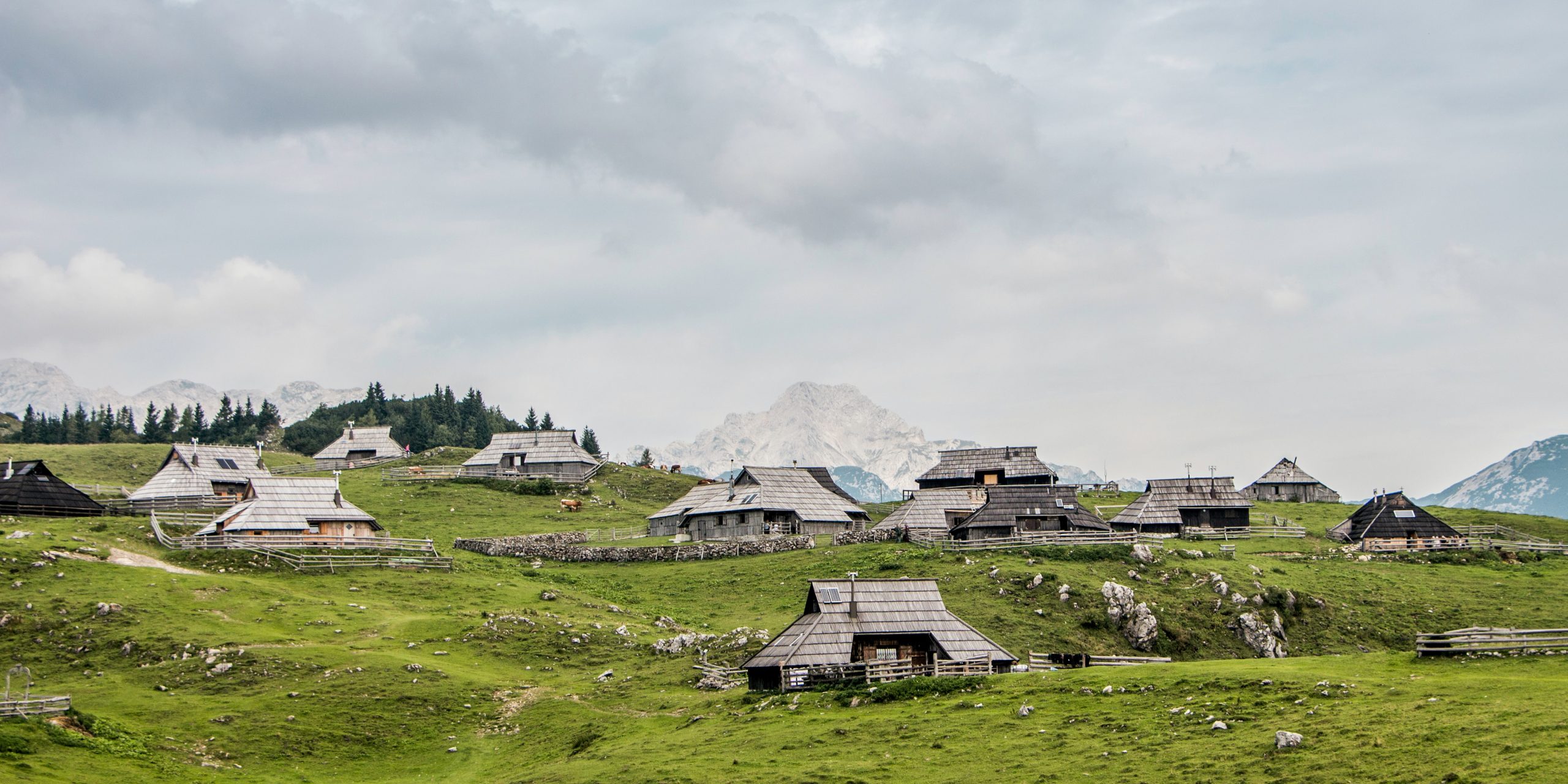
Hiking While Tracking Bears
Do you love wildlife? If so, no Slovenia hike is complete without tracking bears with a guide.
The Kočevje region, of which approximately 90 per cent is woodlands, making it one of the most wooded areas in Europe, is believed to be home to the largest brown bear population in Slovenia, and, according to Lonely Planet, is one of the top 12 destinations in the country.
By taking the Roška Pešpot Hiking Trail, which is marked with a bear’s paw, you can hike through the solitude of the Rog forest and spot a brown bear, a memory that will last you a lifetime.






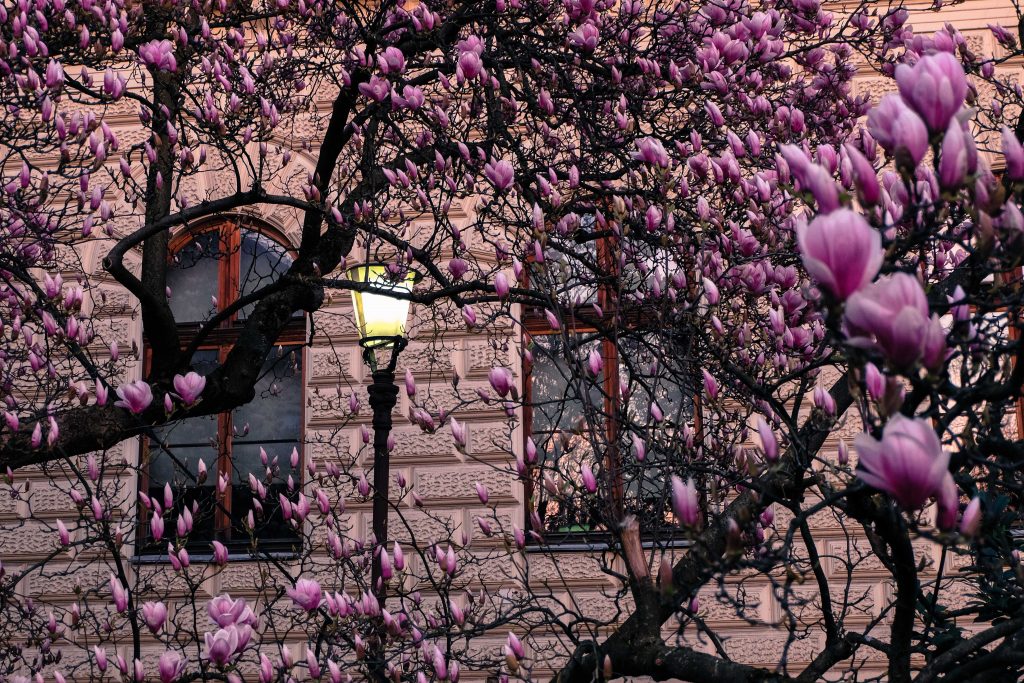


Leave a Reply